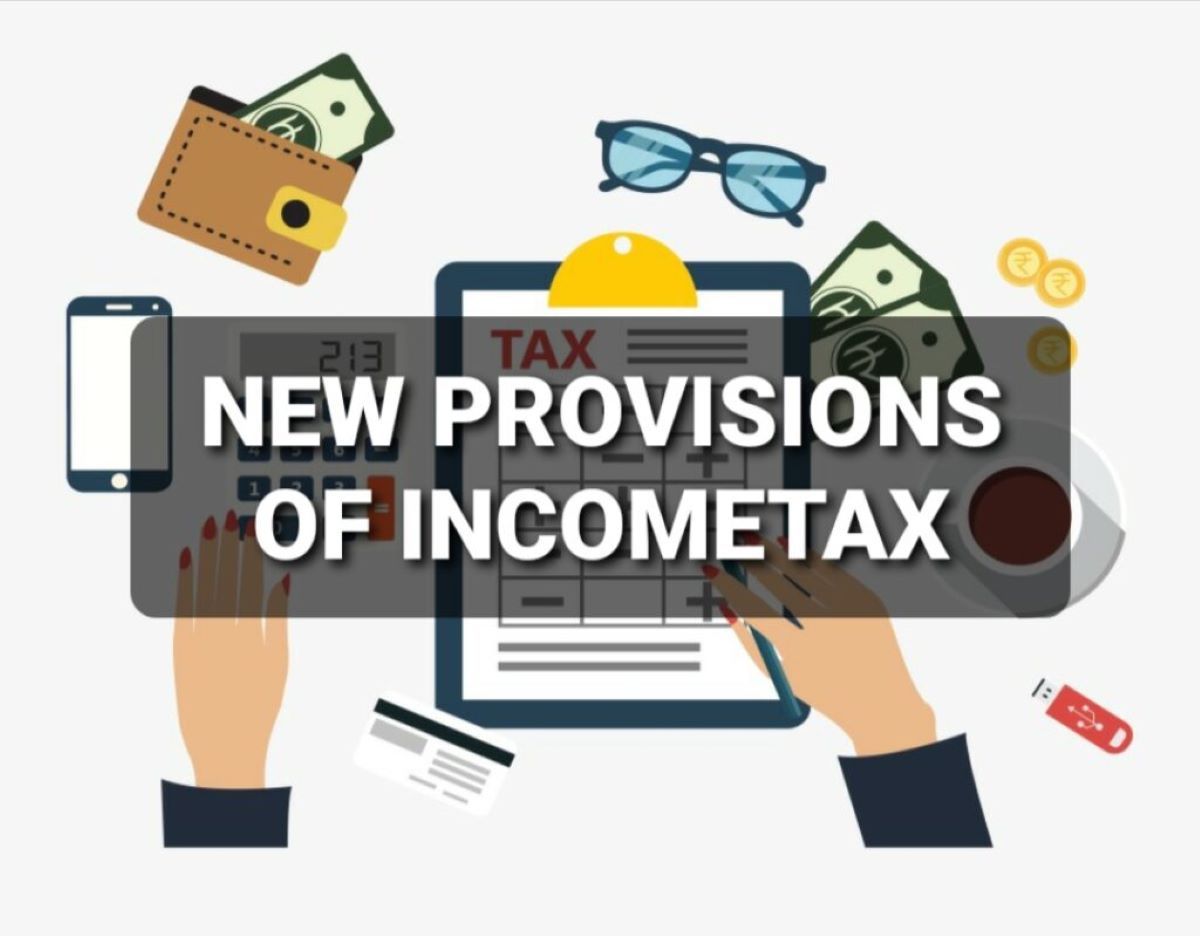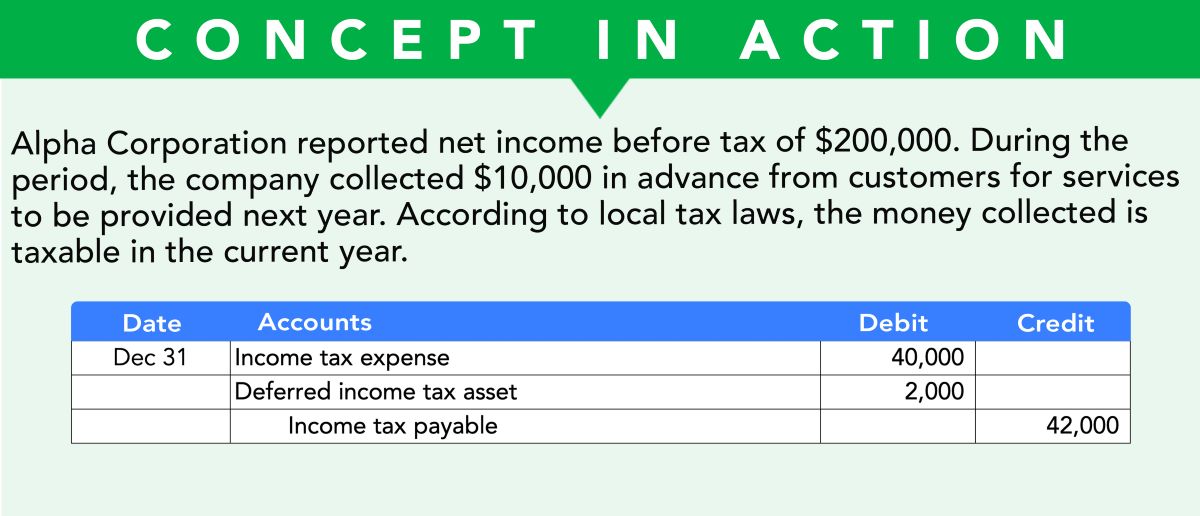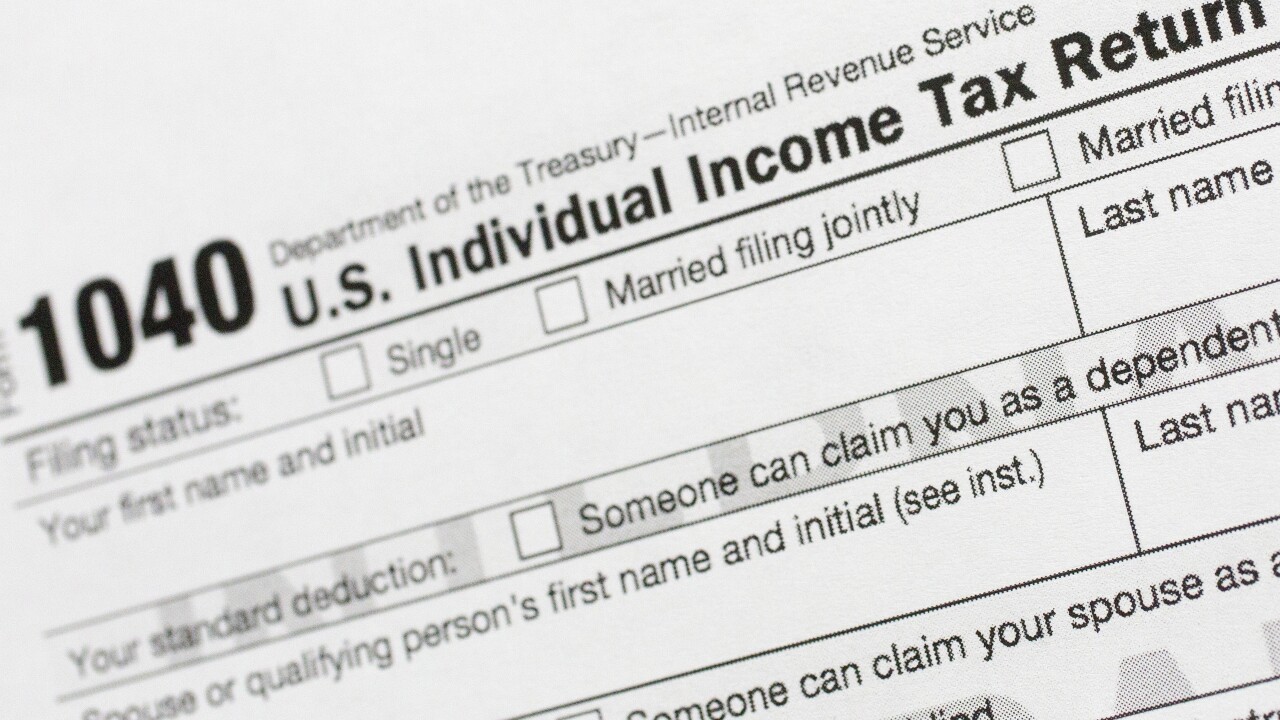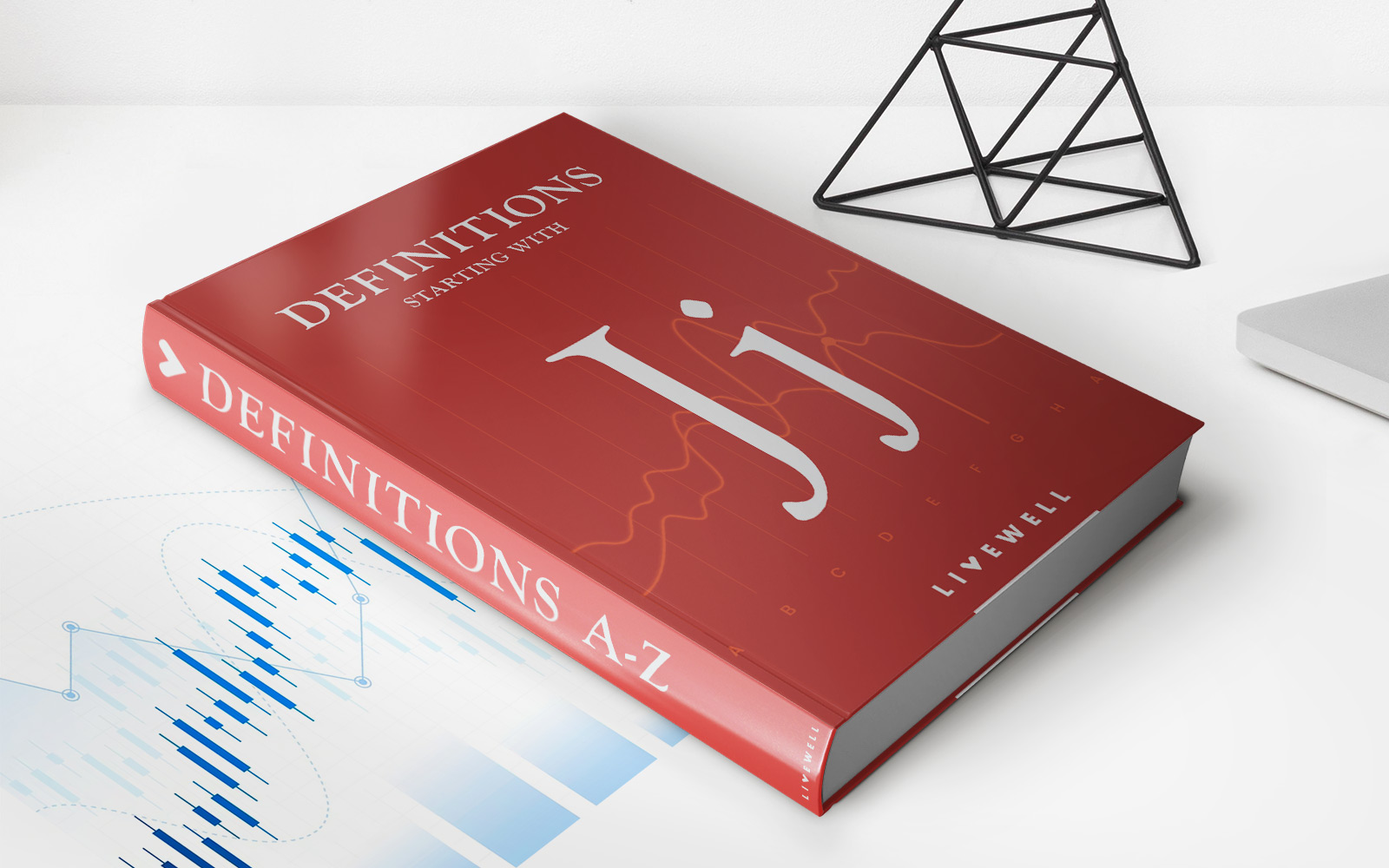

Finance
What Is The Graduated Income Tax
Published: November 2, 2023
Discover the concept of graduated income tax and its implications on personal finances. Explore the benefits and drawbacks of this progressive taxation system in-depth.
(Many of the links in this article redirect to a specific reviewed product. Your purchase of these products through affiliate links helps to generate commission for LiveWell, at no extra cost. Learn more)
Table of Contents
Introduction
The concept of a graduated income tax is a fundamental pillar of modern financial systems around the world. It is a progressive tax structure that imposes higher tax rates on individuals with higher incomes, while individuals with lower incomes pay lower tax rates. This system is designed to achieve a fair distribution of the tax burden among citizens and provide a means for governments to generate revenue to fund public services and programs.
The idea of a graduated income tax has roots dating back to ancient civilizations such as Egypt and Rome, but it gained significant prominence in the late 18th and early 19th centuries. The introduction of a graduated income tax revolutionized the way societies generated revenue, bringing about more equitable taxation and reducing the burden on lower-income individuals.
Today, the graduated income tax remains a key component of most modern tax systems. Countries around the world use this progressive tax structure to fund government operations, social welfare programs, and public investment.
In this article, we will explore the definition of a graduated income tax, examine its historical background, discuss its purpose and functionality, and analyze the advantages and disadvantages associated with its implementation. We will also delve into the criticisms and debates surrounding this tax structure and provide examples of countries that utilize a graduated income tax system.
By the end of this article, you will have a comprehensive understanding of what a graduated income tax is, how it works, and its impact on individuals and society as a whole.
Definition of Graduated Income Tax
A graduated income tax, also known as a progressive income tax, is a tax system in which the tax rate increases as an individual’s income rises. This means that individuals with higher incomes are subject to higher tax rates, while those with lower incomes pay a lower percentage of their income in taxes.
The basic principle behind a graduated income tax is to create a fair and equitable tax system that takes into account the ability to pay. It recognizes that individuals with higher incomes can afford to contribute a larger portion of their earnings towards taxes, while those with lower incomes may struggle to meet their basic needs if subjected to higher tax rates.
In a graduated income tax system, the tax rates are divided into brackets or income bands, each with its own tax rate. As an individual’s income surpasses the threshold of one bracket and enters the next, they are taxed at a higher rate only on the portion of income that falls within that bracket. This progressive structure ensures that individuals are not burdened with a disproportionately high tax bill based solely on their overall income.
For example, let’s say there is a graduated income tax system with three brackets: 10% for incomes up to $50,000, 20% for incomes between $50,001 and $100,000, and 30% for incomes above $100,000. If an individual earns $60,000, they would pay 10% on the first $50,000 and 20% on the remaining $10,000. This ensures that individuals with higher incomes contribute a larger share of their earnings to taxes.
In contrast, a flat tax system applies the same tax rate to all individuals, regardless of their income level. This means that someone earning $20,000 and someone earning $200,000 would be subject to the same tax rate, resulting in a higher burden on lower-income individuals.
A graduated income tax system is often seen as a progressive mechanism that promotes income redistribution and social equity by providing essential funding for public services, infrastructure development, education, healthcare, and social welfare programs.
Now that we have a clearer understanding of the definition of a graduated income tax, let’s delve into its historical background to better appreciate its evolution and significance in modern society.
Historical Background
The concept of a graduated income tax has a long history that can be traced back to ancient civilizations. However, it gained significant prominence during the late 18th and early 19th centuries as a response to the growing economic disparities resulting from industrialization and urbanization.
One of the earliest references to a graduated income tax can be found in ancient Egypt around 3000 BCE, where the pharaohs levied taxes on both land and personal property. In ancient Rome, during the reign of Emperor Augustus in the 1st century BCE, a form of progressive taxation known as the “lex Papia Poppaea” was implemented, which imposed higher tax rates on the wealthy while providing tax breaks for families with many children.
However, it was not until the late 18th century that the idea of a graduated income tax gained significant attention. In 1799, during the French Revolution, the French government implemented a tax system that introduced progressive tax rates, known as the “Impôt sur le revenu.” This marked the first modern application of a graduated income tax.
Throughout the 19th century, the concept of a graduated income tax began to gain momentum in various countries. In 1842, the British economist and philosopher, John Stuart Mill, advocated for a graduated income tax in his book “Principles of Political Economy.” His ideas influenced policymakers around the world, including the United States.
In the United States, the federal government first experimented with a graduated income tax during the Civil War, with the passage of the Revenue Act of 1862. However, the tax was later declared unconstitutional by the Supreme Court. It wasn’t until 1913, with the ratification of the 16th Amendment, that the U.S. implemented a permanent federal income tax, which included progressive tax rates.
The idea of a graduated income tax continued to spread across the globe in the 20th century. Many countries adopted similar tax systems as a means to fund government operations and promote economic stability. The principles of progressive taxation and income redistribution became ingrained in modern economic theories and policies.
Today, graduated income tax systems are prevalent in numerous countries, with varying tax brackets and rates. Governments continue to refine and adjust these tax structures to ensure fairness, stimulate economic growth, and provide for the needs of their citizens.
Having explored the historical background of the graduated income tax, let’s now turn our attention to understanding its purpose and the benefits it offers to society.
Purpose of Graduated Income Tax
The purpose of a graduated income tax is multi-faceted, encompassing both social and economic objectives. Let’s explore some of the key reasons why governments implement this progressive tax structure:
- Income Redistribution: One of the primary goals of a graduated income tax is to achieve income redistribution. By imposing higher tax rates on individuals with higher incomes, the tax system aims to reduce wealth inequality and create a more equitable society. This redistribution of income helps support social welfare programs and provides a safety net for those in need. It helps ensure that wealthier individuals contribute a larger share of their income for the betterment of society as a whole.
- Progressive Approach to Taxation: A graduated income tax follows the principle of “ability to pay.” It recognizes that individuals with higher incomes have a greater capacity to contribute to public finances. By applying higher tax rates to higher incomes, the tax system takes into account the disparity in financial abilities among individuals and helps to ensure a fair distribution of the tax burden.
- Revenue Generation: Another crucial purpose of a graduated income tax is to generate revenue for government operations and public services. The higher tax rates on higher incomes can provide a substantial source of funding for essential programs such as education, healthcare, infrastructure development, and social welfare initiatives. This revenue helps support the functioning of the government and the provision of necessary services for the welfare of society.
- Economic Stability: A graduated income tax can be used as a tool to promote economic stability. By taxing higher incomes at higher rates, the tax system allows for the potential redistribution of resources, which can contribute to a more balanced economy. The revenue generated from higher-income individuals can be utilized to invest in public infrastructure, stimulate economic growth, and address socioeconomic disparities, ultimately fostering a more stable and prosperous society.
- Behavioral Influence: Graduated income tax can also be utilized as a means to influence behavior and encourage specific social and economic outcomes. By implementing tax breaks or deductions for certain actions or activities (e.g., incentivizing investment in green technology), the tax system can provide incentives for desired behaviors and stimulate positive societal change.
Overall, the purpose of a graduated income tax is to create a fair, progressive, and effective tax system that promotes income redistribution, generates revenue for public services, fosters economic stability, and influences positive societal and economic behavior. Although debates exist about the optimal tax structures and rates, the fundamental objective remains to strike a balance between societal needs and individual financial capacities.
Now that we understand the purpose behind a graduated income tax, let’s explore how this tax system works in practice.
How Does a Graduated Income Tax Work?
A graduated income tax functions by dividing taxable income into different brackets or bands, each with its corresponding tax rate. As an individual’s income increases, they move into higher tax brackets and are subject to higher tax rates on the portion of income within each bracket.
Here’s a simplified example to illustrate how a graduated income tax works:
- Income Bracket 1: Up to $50,000, taxed at a rate of 10%
- Income Bracket 2: $50,001 to $100,000, taxed at a rate of 20%
- Income Bracket 3: Above $100,000, taxed at a rate of 30%
Let’s assume an individual has an annual taxable income of $75,000. Here’s how their tax would be calculated:
- The first $50,000 of their income would be taxed at a rate of 10%, resulting in a tax of $5,000.
- The remaining $25,000 ($75,000 – $50,000) would fall within the second tax bracket. This portion of their income would be taxed at a rate of 20%, resulting in a tax of $5,000 ($25,000 x 20%).
Therefore, the individual’s total tax liability would amount to $10,000 ($5,000 + $5,000).
The graduated income tax system ensures that individuals with higher incomes are subject to higher tax rates, aligning with the principle of progressive taxation. This allows for a more equitable distribution of the tax burden based on an individual’s ability to pay.
It’s important to note that a graduated income tax doesn’t mean that all of an individual’s income is taxed at the highest rate they fall into. Only the portion of their income within each bracket is taxed at the respective rate. This ensures that higher-income individuals contribute a larger share of their earnings to taxes, while those with lower incomes face a lower tax burden.
It’s also worth mentioning that the specific income brackets and tax rates can vary from country to country and may be adjusted periodically based on economic and social factors. Some countries may have more tax brackets and higher tax rates for high-income earners, while others may have fewer brackets and lower rates.
In addition to the progressive structure, graduated income taxes often incorporate various deductions, exemptions, and credits to account for personal circumstances, such as dependents, mortgage interest, or charitable contributions. These provisions can reduce an individual’s taxable income and, in turn, lower their overall tax liability.
By implementing a graduated income tax, governments aim to ensure a fair and progressive tax system that generates revenue, promotes economic stability, and supports the well-being of society as a whole.
Now that we have an understanding of how a graduated income tax works, let’s explore some of its advantages.
Advantages of Graduated Income Tax
A graduated income tax system offers several advantages that contribute to a fair and equitable taxation structure. These advantages include:
- Progressive Taxation: One of the key advantages of a graduated income tax is that it follows the principle of progressive taxation. This means that individuals with higher incomes contribute a larger share of their earnings in taxes. This progressive approach helps to reduce income inequality and promotes a more equitable distribution of wealth.
- Income Redistribution: A graduated income tax facilitates income redistribution by shifting wealth from higher-income individuals to those with lower incomes. This redistribution can help address social and economic disparities, providing necessary support for the less advantaged members of society. It helps fund social welfare programs, education, healthcare, and other essential services that contribute to greater social cohesion and well-being.
- Ability to Pay: By imposing higher tax rates on higher incomes, a graduated income tax system takes into account an individual’s ability to pay. It recognizes that higher-income earners have a greater capacity to contribute to public finances. This approach ensures that the tax burden is proportionate to an individual’s financial means, promoting a sense of fairness in the taxation system.
- Revenue Generation: Graduated income taxes provide governments with a reliable source of revenue. The higher tax rates applied to higher incomes generate substantial funds that can be utilized to finance public services and investments. These revenues can be directed towards infrastructure development, education, healthcare, social security, and other critical programs that benefit society as a whole.
- Economic Stability: A graduated income tax system can help promote economic stability. By redistributing income and wealth, it reduces financial disparities and fosters a more balanced economy. The revenue generated from higher-income individuals can be utilized to invest in public infrastructure, create job opportunities, and stimulate economic growth. This stability contributes to an environment that benefits businesses, individuals, and the overall economy.
Overall, a graduated income tax system ensures that those with higher incomes contribute a larger portion of their earnings to support societal needs. The system promotes income redistribution, social equity, and economic stability, creating a fairer and more balanced society.
While a graduated income tax system offers significant advantages, it is essential to recognize that there are also arguments against its implementation. Let’s explore some of the disadvantages and potential criticisms in the next section.
Disadvantages of Graduated Income Tax
While a graduated income tax system has its advantages, there are also certain disadvantages and criticisms associated with its implementation. These include:
- Discouragement of Work and Innovation: Critics argue that higher tax rates on higher incomes can discourage work and innovation. Individuals with higher incomes may feel disincentivized to work harder, take risks, or invest in entrepreneurial ventures if they perceive that a significant portion of their earnings will be heavily taxed. This can potentially hinder economic growth and productivity.
- Impact on Economic Growth: Some argue that higher tax rates on higher incomes may impede economic growth. The wealthier individuals who are subject to these higher rates are often significant contributors to business investments, job creation, and overall economic activity. High tax burdens on these individuals may lead to reduced investment, entrepreneurship, and economic expansion.
- Tax Avoidance and Evasion: Critics claim that higher tax rates in a graduated income tax system can lead to increased tax avoidance and evasion. Individuals with higher incomes may employ various strategies, such as offshore accounts or intricate tax planning, to minimize their tax liability. This can result in reduced tax revenues and hinder the effectiveness of the tax system.
- Complexity and Administrative Burden: Implementing and managing a graduated income tax system can be complex and administratively burdensome. Determining tax brackets, calculating rates, and monitoring compliance can be challenging tasks for tax authorities. The complexity and administrative requirements may lead to increased costs and potential inefficiencies.
- Unintended Consequences: Graduated income tax systems may have unintended consequences on behaviors and economic decisions. High-income earners may alter their behavior, such as through tax planning or choosing investments based on tax implications rather than economic viability. This can distort economic decision-making and result in inefficiencies in resource allocation.
It is important to note that the extent to which these disadvantages and criticisms manifest vary depending on the specific tax system and the broader economic context in which it operates. Governments need to carefully consider these factors and strike a balance between promoting fairness and economic growth when implementing their tax policies.
While there are disadvantages associated with a graduated income tax system, it remains a prevalent approach globally due to its perceived ability to promote equity and provide necessary funding for public services and social welfare programs.
Having examined the potential criticisms and disadvantages, let’s now explore the ongoing debates and controversies surrounding the implementation of a graduated income tax.
Criticisms and Debates
The implementation of a graduated income tax system has been a subject of ongoing debates and controversies. While supporters argue for its fairness and effectiveness, critics raise several concerns. Let’s explore some of the key criticisms and debates surrounding the graduated income tax:
- Impact on Economic Growth: One of the main criticisms centers on the potential negative impact of higher tax rates on economic growth. Critics argue that the higher tax burden on higher-income individuals can discourage investment, entrepreneurship, and innovation, adversely affecting overall economic growth.
- Effectiveness of Income Redistribution: While a graduated income tax system aims to redistribute wealth, critics contend that it may not effectively address income inequality. They argue that the wealthy can leverage various tax planning strategies and loopholes to minimize their tax obligations, reducing the intended redistribution impact.
- Brain Drain and Tax Migration: Critics suggest that high-income individuals may relocate or engage in tax planning strategies to minimize their tax liability. This potential “brain drain” can lead to a loss of talent and capital, impacting the overall economy.
- Administrative Complexity: The complexity of calculating and managing a graduated income tax system is often criticized. Critics argue that complex tax codes and reporting requirements create an administrative burden for taxpayers and tax authorities alike.
- Alternative Tax Structures: Some debates center around alternative tax structures, such as a flat tax rate or consumption-based taxes. Critics argue that these alternative systems are simpler, fairer, and promote economic growth more effectively than a graduated income tax system.
- Effective Tax Rates: Critics also highlight disparities in effective tax rates, which take into account deductions, exemptions, and loopholes. They argue that some individuals with high incomes may have lower effective tax rates than expected, reducing the progressiveness of the tax system.
These debates and criticisms highlight the complexity and challenges associated with implementing a graduated income tax system. Governments must carefully consider these arguments when designing and refining their tax policies to strike a balance between fairness, economic growth, and administrative feasibility.
Now, let’s take a look at some countries that have implemented a graduated income tax system to see real-world examples of this tax structure in action.
Examples of Countries with Graduated Income Tax
A graduated income tax system is implemented by many countries around the world. While specific tax brackets and rates vary, these countries share the principle of progressive taxation. Here are a few examples of countries that employ a graduated income tax system:
- United States: The United States has a federal income tax system with graduated tax brackets. There are currently seven tax brackets, ranging from 10% to 37%, based on an individual’s taxable income. Each bracket applies a different tax rate to the corresponding portion of income.
- United Kingdom: In the United Kingdom, income tax is levied on a graduated basis. There are currently five tax bands, ranging from 20% to 45%, based on an individual’s taxable income. The tax rates increase as income rises, ensuring a progressive tax structure.
- Canada: Canada also employs a graduated income tax system. It currently has five federal tax brackets, with rates ranging from 15% to 33%, based on an individual’s taxable income. The progressive tax rates take into account an individual’s ability to pay.
- Australia: Australia utilizes a progressive tax system with several tax brackets. The tax rates range from 0% to 45%, depending on an individual’s taxable income. The progressive structure aims to ensure fairness in taxation and the redistribution of wealth.
- Sweden: Sweden is known for its progressive tax system. The country has multiple tax brackets, with rates ranging from 32% to 57%. This progressive structure enables the government to provide a robust welfare system and social services.
- France: France also implements a graduated income tax system. The country has several tax bands, with rates ranging from 0% to 45%. Higher-income individuals face higher tax rates, contributing to income redistribution and funding public welfare programs.
These are just a few examples of countries that employ a graduated income tax system. Many other countries, including Germany, Japan, Denmark, and Finland, have similar tax structures in place.
The specific tax brackets and rates within each country can change over time due to economic and political factors. Governments continually review and adjust these tax systems to ensure they align with their social and economic objectives.
Now, let’s conclude our discussion on the graduated income tax system.
Conclusion
A graduated income tax system, with its progressive tax rates and brackets, has become a fundamental component of tax systems in many countries around the world. It aims to achieve a fair and equitable distribution of the tax burden while providing revenue to fund government operations and essential public services.
This article has explored the definition of a graduated income tax, its historical background, purpose, and functionality. We have discussed the advantages of a graduated income tax, such as progressive taxation, income redistribution, and revenue generation. Additionally, we have addressed the disadvantages and criticisms, such as potential impacts on economic growth, administrative complexities, and behavioral effects.
Despite the ongoing debates surrounding the graduated income tax system, it remains a prevalent approach globally. Countries like the United States, the United Kingdom, Canada, Australia, Sweden, and France, among many others, have implemented a graduated income tax system to promote fairness and support socioeconomic well-being.
Ultimately, striking a balance between fairness, economic growth, and administrative feasibility is of utmost importance when designing and implementing tax policies. Governments face the challenge of continuously refining their tax systems to ensure they meet the needs of their citizens and contribute to a just and sustainable society.
By understanding the concept and functioning of a graduated income tax system, individuals can gain insights into the principles of progressive taxation and its impact on society. Whether as taxpayers or policymakers, awareness of the advantages, disadvantages, and ongoing debates surrounding the graduated income tax system allows for informed discussions on its effectiveness and potential improvements.
In conclusion, the graduated income tax system reflects the broader goals of achieving fairness, income redistribution, and economic stability. It serves as a crucial tool for governments to collect revenue and support the overall welfare of their citizens.














